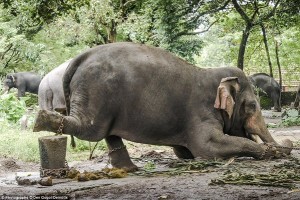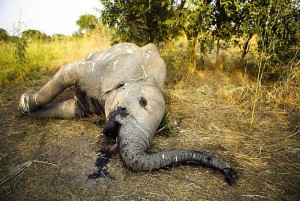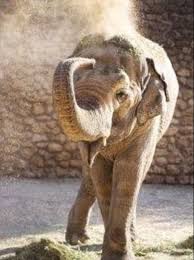
This is how elephants are often “trained” after they have been captured in the wild and taken from their families.
Will EU officcials allow baby elephants to be taken from their families and tortured for profit?
According to writer Jane Dalton of The Independent, the European Union may vote in favour of exporting wild baby elephants from Africa to zoos worldwide. This is a act that ElephantRescue.Net condemns as sick and void of all basic responsibility.
If the ban is lifted, baby elephants will be sentinced to a life of unspeakable misery for the remainder of their lives. They may suffer horriblly every day for the next 70 years.
Dalton says, “The creatures, many of whom survive long journeys to captivity, mostly in China, have been filmed being beaten and kicked, and displaying clear signs of stress, according to animal-welfare groups.
“Earlier this week at the world’s biggest wildlife conference, governments including African elephant-range states, backed an end to the practice of capturing the youngsters, mostly in Zimbabwe, to be sold to zoos and circuses.”
Dalton continues, “Before the vote at committee stage, EU representatives spoke out against the proposed ban, telling delegates they would oppose it.
“Representing 28 countries including the UK, the EU vote carries great weight in shaping the rules of the Convention of International Treaties of Engangered Species (CITES), which is the world’s watchdog for wildlife trade.
“Asked by The Independent why it opposes a ban the EU has yet to respond.” There is speculations that the EU is under pressure from the Europe’s zoos that want to continue to import elephants to attract zoo visitors.
Dalton says that according to the wildlife charity Born Free Foundation, between 1990 and 2015, at least 1,774 wild African elephants were reported to have been exported for captive use.
Chief Executive of Born Free, Howard Jones said: “We face a knife-edge decision on the future security of African elephants and the rights of elephant families not to be hunted, or mothers killed while their babies are kidnapped for live trade to captivity in China, Russia and any other country prepared to pay. It can’t be right, it isn’t right, now or ever, and the people of Europe must speak out against this horror and pull their leaders back from the edge.”



